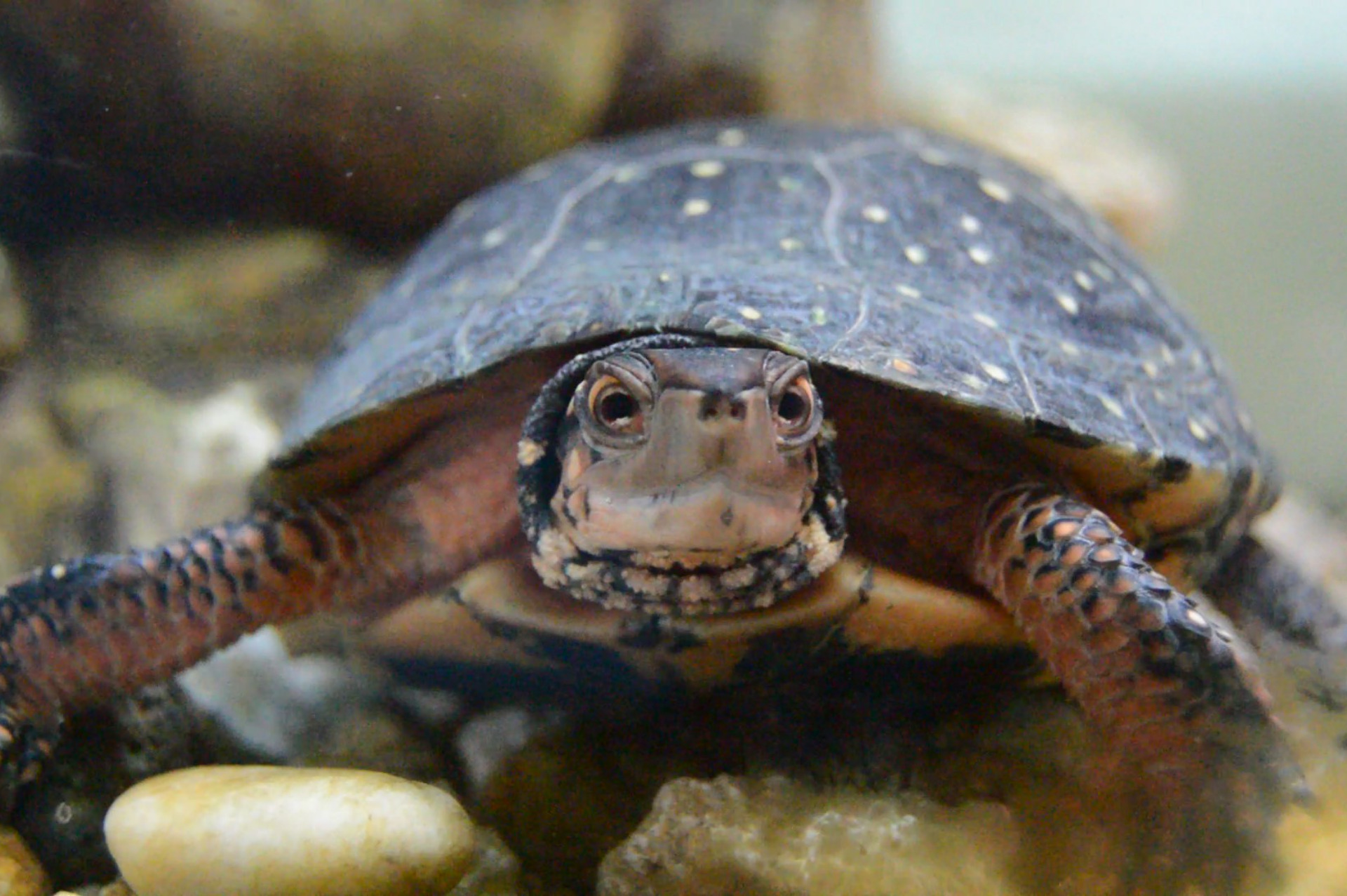Spotted Turtle

Basic Information:
Scientific Name: Clemmys guttata
Habitat: Spotted turtles can be found in the swamps, bogs, fens, marshes, woodland steams, and wet pastures of eastern United States.
Diet: Spotted turtles are primarily carnivorous and tend to eat snails, worms, slugs, and spiders.
Size: 0.3 to 0.5 feet long
Weight: 0.5 to 0.8 pounds
Lifespan: 25 to 50 years
Distribution Map:
I.U.C.N. Conservation Status:

What does this mean?
Endangered – a species determined by the International Union for Conservation of Nature (I.U.C.N.) to possess a very high risk of extinction as a result of rapid population declines of 50 to more than 70 percent over the previous 10 years (or three generations), a current population size of fewer than 250 individuals, or other factors.
Our Spotted Turtle:
Pip (Female) – Estimated Date of Birth Between May 2009 & May 2010
About Spotted Turtles:
Spotted turtles are a native species to the United States’ east coast and great lakes region. They are distinguishable by the yellow polka dots that are scattered across their dark shells. While back in the early 1900s, these turtles were considered to be one of the most common turtles in the New York area, their populations have begun to dwindle do to habitat loss, alteration, and fragmentation; climate change; poaching; and the pet trade. Today, this species is part of the AZA’s SAFE: American Turtle Program and efforts are being made to help protect the population.
Did You Know?!
- Spotted turtles are of special concern due to habitat loss and the illegal pet trade.
- During daylight hours, spotted turtles eat and bask in the sun. In the evening, spotted turtles submerge themselves and spend the night underwater.
- This species is the most aquatic member of the genus, but it is usually not found in deep water
- Reports suggest that female spotted turtles are capable of a greater production of eggs than is normally seen in the wild, but are constrained by unknown environmental factors (such as a limited food supply or short activity season).
- The sex of spotted turtle hatchlings is determined by nest temperature: in the lab, cooler experimental temperatures produced mostly males, and warmer temperatures produced only females.
